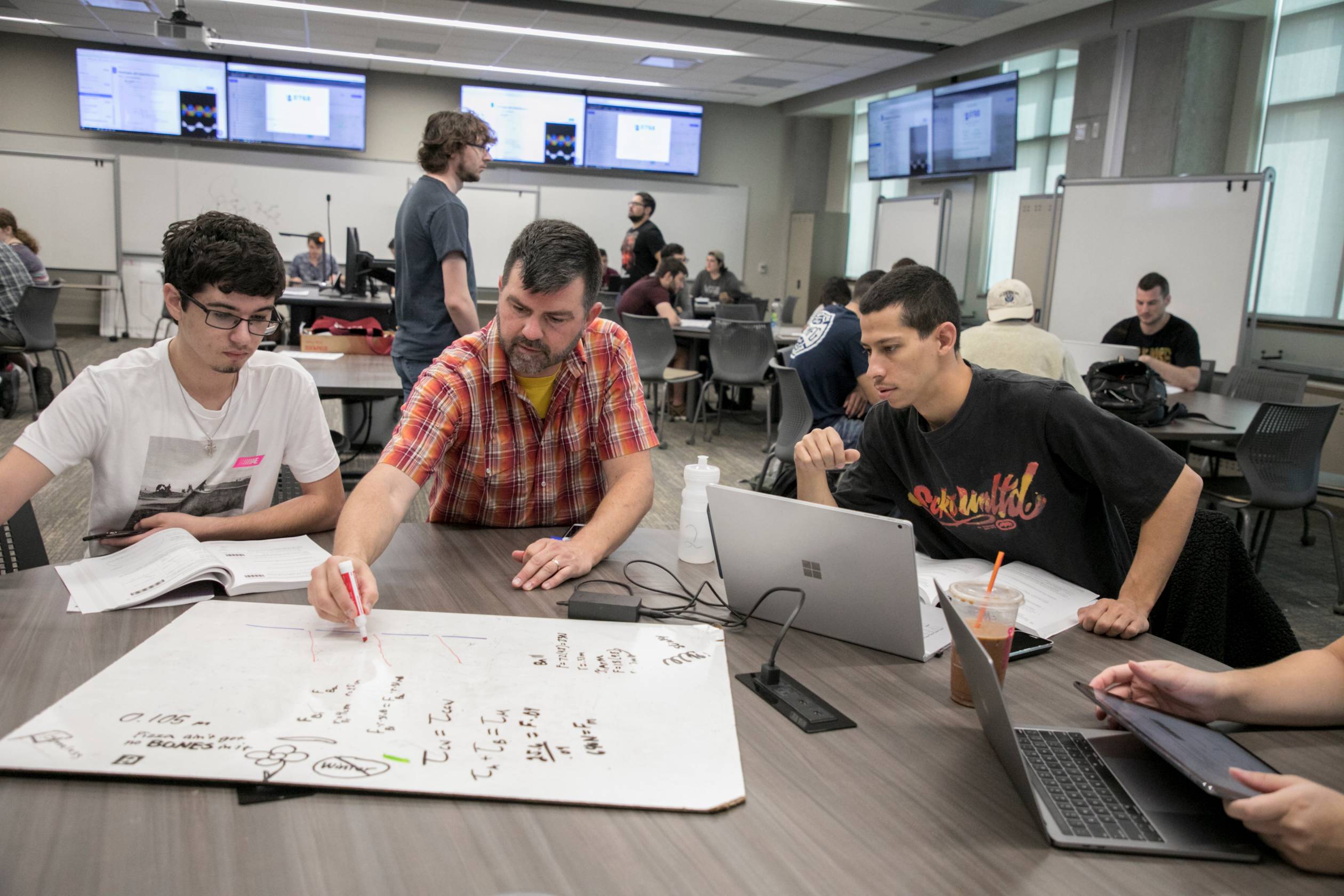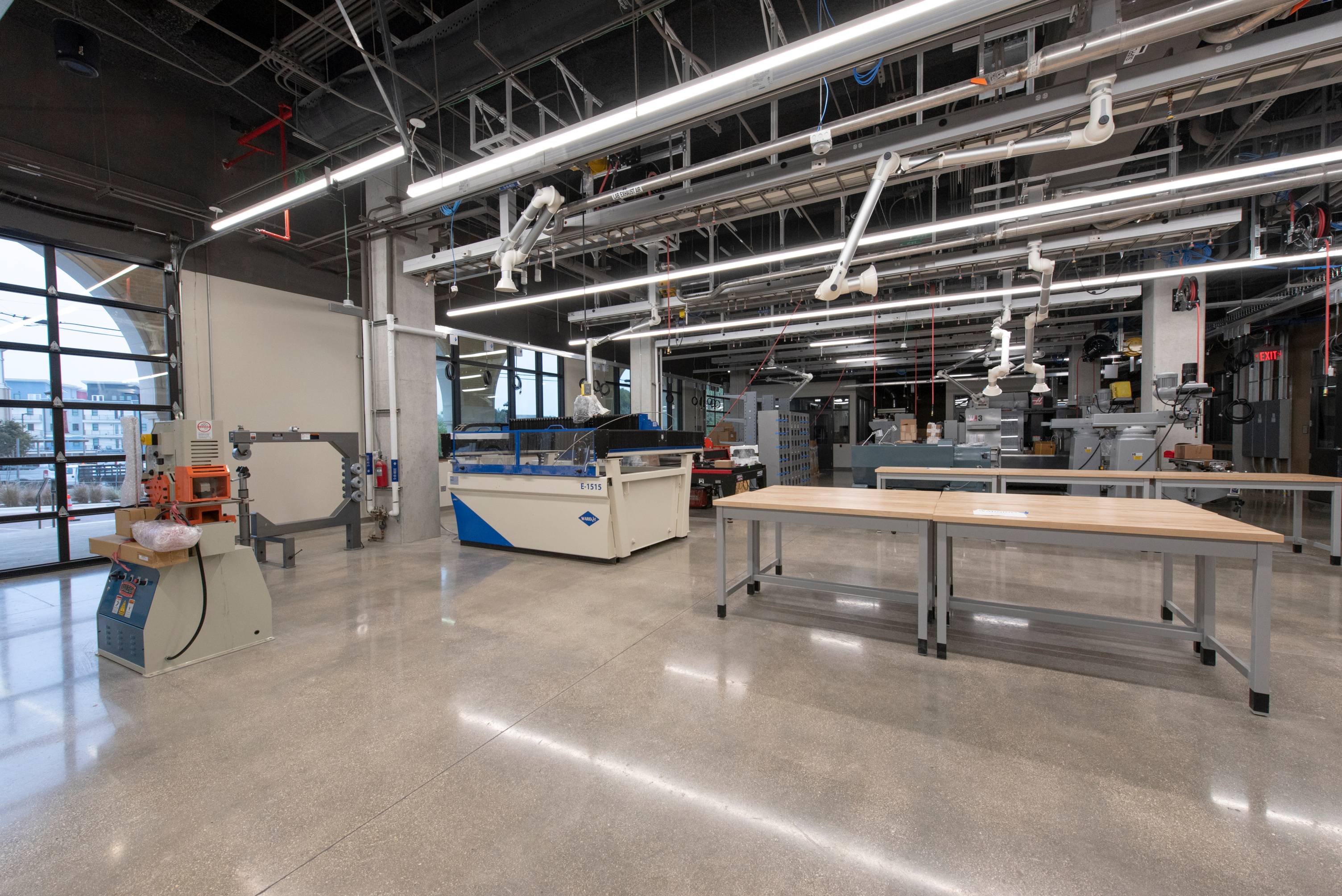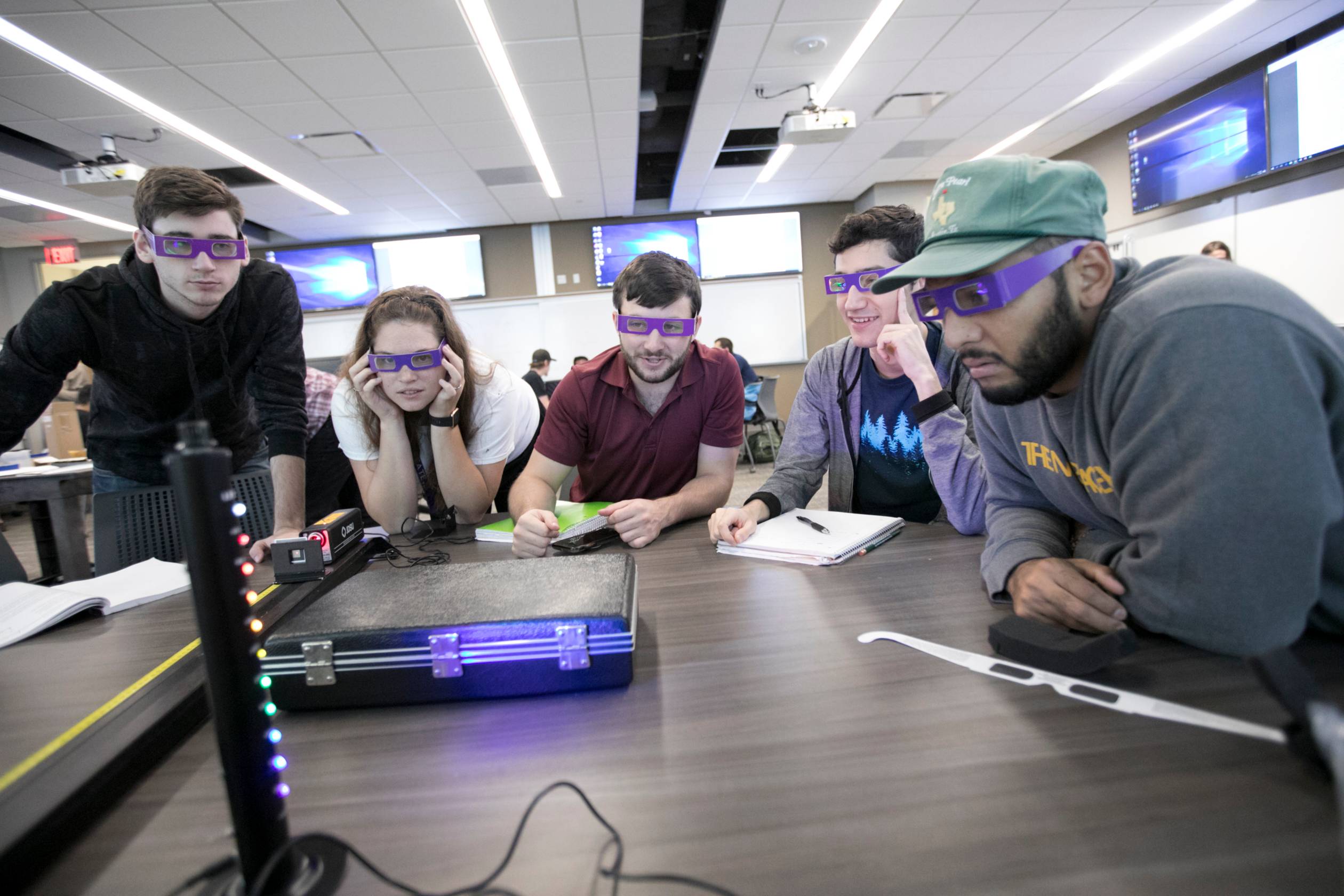Ingram Hall dedication ushers in new era for Texas State engineering, science
Texas State University dedicated the Bruce and Gloria Ingram Hall science and engineering building with a ribbon-cutting on November 8.
With more than 166,000 square feet of space over five floors, Ingram Hall is the largest, most ambitious academic building project in Texas State history.
Texas State President Denise M. Trauth, Texas State University Board of Regents Vice Chairman and Local Committee Chairman Bill Scott, and Texas State University System Chancellor Brian McCall delivered remarks.
The $120 million building is named for long-time Texas State benefactors Bruce and Gloria Ingram. Funding for the building was made possible through the combination of a generous donation from the Ingrams that was leveraged as a matching gift through the Texas Research Incentive Program (TRIP), and the support of the Texas Legislature.

"Ingram Hall is a significant addition to Texas State, but it’s also part of something much bigger," Trauth said. "It will have a major impact on the future of our economy, workforce, and industry in the Texas Innovation Corridor.
"Through innovation, we can solve real-world problems and ultimately improve quality of life issues, like health and public safety," she said. "I look forward to the breakthroughs that will take place in Ingram Hall, elevating our research profile in the Texas Innovation Corridor and nationwide. On behalf of Texas State, thank you to Bruce and Gloria Ingram for their generosity and vision."
The Texas Innovation Corridor is a 13-county region stretching between Austin and San Antonio that has experienced unprecedented population growth, job creation, new business startups, and economic expansion over the previous decade.
The opening of Ingram Hall allows the electrical engineering, industrial engineering, and manufacturing engineering programs to relocate and expand, accommodating the rapid growth of the Ingram School of Engineering since its establishment in 2007. This, in turn, frees up space in the Roy F. Mitte Building to be renovated for Texas State's new civil engineering program, pending final approval from the Texas Higher Education Coordinating Board and the Southern Association of Colleges and Schools Commission on Colleges. Eventually, the university plans to add a mechanical engineering program.
"On behalf of the College of Science and Engineering, let me express my excitement about the addition of Ingram Hall to the campus," said Christine Hailey, dean of the College of Science and Engineering. "It is a welcoming space that supports learning and collaboration for both students and faculty. The new facilities and equipment greatly enhance our ability to offer innovative programs in teaching and research."
In addition to engineering, Ingram Hall features new spaces for the programs in biology, computer science, mathematics, and physics. The Materials Science, Engineering and Commercialization (MSEC) Ph.D. program, an interdisciplinary program that works closely with the McCoy College of Business Administration to help students develop the skills to develop their work from a commercial perspective, will also benefit from new space in the building.


Dominating a full square block at the corner of Comanche and Woods Streets, Ingram Hall is a visual demonstration of the university's commitment to science, engineering, and technology. Ingram Hall brings an array of cutting-edge facilities to Texas State, including new active learning classrooms and an extension of the System Modeling and Renewable Technology (SMART) Lab where students are directly involved with renewable energy research. The Collaborative Learning Center (CLC) is open to all students in the College of Science and Engineering, offering free walk-in tutoring in basic and advanced biochemistry, biology, chemistry, computer science, engineering, engineering technology, mathematics, and physics courses.

Texas State faculty helped design the active learning classrooms on the third and fourth floors, which incorporate the latest technologies based on educational research. The active learning concept is designed to encourage students to work together to come to understand a physics, biology, or engineering concept through 'hands-on' experiences. In essence, if students are asked to figure out a physics principle or biology principle, they will understand it deeply and transfer their understanding to other problems. These classroom environments are designed for students to engage with experiments and models, and to engage in robust discussion with peers.
Perhaps the most striking presence in Ingram Hall will be the campus-accessible "makerspace." Highly visible with broad windows allowing passers-by to observe activity within, the makerspace includes large and small 3-D printers, laser cutters and engravers, metal and plastic mills, a large water jet table, and equipment to enable the recycling of 3-D printer waste. There are also fully-equipped areas for welding, sheet metal work, printed circuit boards, and woodworking. Plans are for the makerspace to ultimately be accessible to the entire Texas State community.
“Ingram Hall, combined with the expanded academic programs in engineering, technology, and science it supports, propels Texas State closer to its goal of becoming designated a national research university. It represents not only an investment in student success, but in the future of our state,” Trauth said.
Explore Ingram Hall in 360 degrees
-
Click to activate full screen -
Click to activate full screen -
Click to activate full screen -
Click to activate full screen -
Click to activate full screen -
Click to activate full screen -
Click to activate full screen -
Click to activate full screen -
Click to activate full screen -
Click to activate full screen -
Click to activate full screen -
Click to activate full screen
Share this article
For downloadable hi-res images from this article, please view the link below.
For more information, contact University Communications:Jayme Blaschke, 512-245-2555 Sandy Pantlik, 512-245-2922 |
